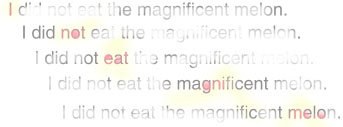

 |
Greg Kochanski |  |
I spent a whole morning last week in the Rutgers library, looking for info on tree roots. The short summary is that if you put 12" of wood fibers on top of the ground, it will kill the tree roots underneath, and if you cover enough of the roots, it will kill the trees.
I'll send a longer summary later, but it looks like 3-4" of mulch (or any wood product) is probably safe, and may even be good for the trees in dry locations (i.e., Morecraft Park, Dunellen, NJ). Since we need more than that to meet safety requirements, we seem to be forced into uncharted territory. People sometimes use artificial ventilation schemes, by laying perforated pipe, but it's state-of-the-art stuff.
The standard playground padding ( 12" of wood mulch/carpeting) will kill the trees, unless serious work is done to get air circulation in under it.
The alternatives seem to be:
I'm not fond of any of those alternatives, but I read enough books that all said esssentially the same thing so that I'm quite convinced we have a problem.
Essentially the wood carpeting causes two problems which add together. First, it traps water, tending to make the soil under it waterlogged. Second, as it slowly decomposes, the microbes that eat it use oxygen. When the oxygen in the soil gets down to 3%-10% (depending on the tree), the roots stop growing (and die within a week or two at 1%-5%).
The way to look at a soil is in terms of oxygen content. As the air percolates down, its oxygen gets used up by soil bacteria, worms, insects, and plant roots. At some depth, it's all gone, and the soil becomes anerobic and essentially lifeless (except for some anerobic bacteria). If the soil is more permeable (e.g, bigger grains, sandy, or gravel), more air can penetrate, and roots can go deeper before the oxygen is gone. On the other hand, if there are more decomposing organics in the soil, the oxygen demand becomes greater, and the oxygen gets used up close to the surface.
Waterlogged soil kills roots because oxygen can't diffuse through water fast enough, so all the little microbes use up the oxygen before it has a chance to travel more than an inch or two down. The water just makes it harder for the oxygen to go anywhere.
Unless there is actual air circulation, the decomposition of the wood mulch/carpet will use up the oxygen, and the roots will die even if they're not waterlogged. Normal soil exchanges air with the atmosphere about once every two days, and it's usually less than 30% rotting organics. If we put a foot of wood on top (i.e. 100% rotting organics), the oxygen demand will be higher, and the air will somehow have to circulate even faster.
I spoke with people at The Fibar Group, and they seemed clueless. For instance, the local rep didn't even know if the stuff would float. They admitted that they hadn't ever looked at a playground with trees a year or two after installation. Most playground don't have trees, and probably few people make the connection between dying trees and the ground cover. If it hadn't been for all the dying trees in Bridgewater (NJ), we certainly wouldn't be aware of it.
| [ Papers | kochanski.org | Phonetics Lab | Oxford ] | Last Modified Tue Oct 24 16:30:29 2006 | Greg Kochanski: [ Home ] |